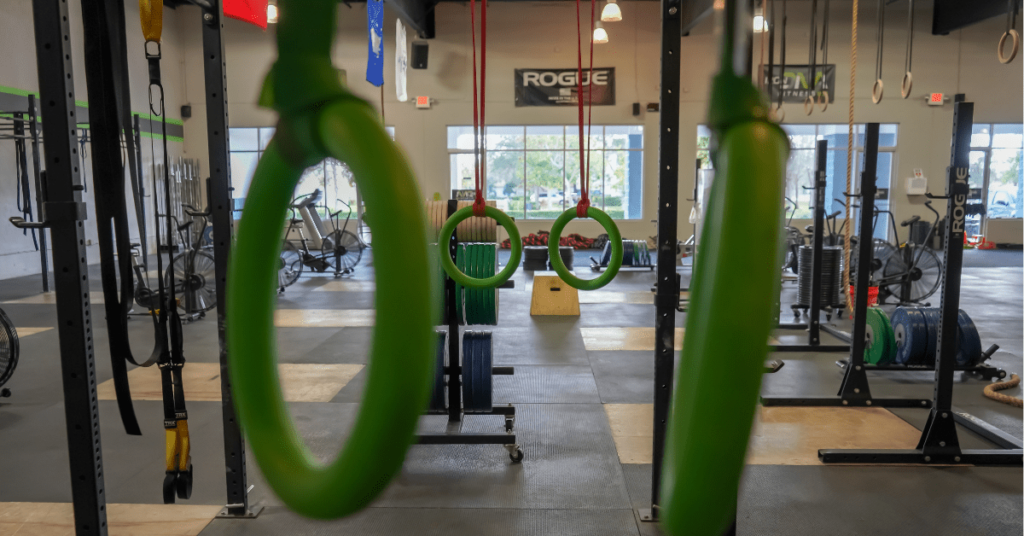According to our ABC Fitness reports, the health and fitness industry in the U.S. is booming. Gym usage is up 60% on pre-pandemic levels, and up to 29% of people have a personal trainer or coach. Overall, people are seeing gyms and fitness centers as the new “third place” in their lives. What does this mean? Other than work and home, people spend most of their time at the gym either working out or socializing.
Although the market may be crowded, it has never been a better time to set up a gym or fitness business. Demand is the highest it’s ever been, and it’s only set to grow.
But how much does it cost to open a gym?
The startup costs for opening a gym business can vary massively depending on the size, location, facility, and the type of gym you plan on launching. The basic start-up costs can range from $10,000 to $50,000 on average. However, the cost can exceed this also. Note that it’s almost impossible to give an entirely accurate estimation that represents all gyms. Different gym owners set up different types of gym businesses, and the startup costs will differ depending on the facility.
Planning out your financing is crucial to success and managing your business long-term. In this article, we will be discussing topics such as property and facility costs, buying equipment, operational costs and so much more.
It’s a solid rule of thumb that most fitness businesses will not make money within their first year of opening, so it’s important that you have a solid runway of funding available to you.
Don’t have time to read the whole article?
Here’s a summary of what’s below:
- Accurate financing is the most important thing when it comes to the success of your fitness business.
- Accurate financing can actually make you money, thanks to interest from investors and stopping mistakes before they happen.
- Investing in quality gym reporting software can save you thousands of dollars every year.
- It pays to prepare; always keep a rainy day fund for emergencies and unseen expenses.
- Overall, expect to pay around $10,000 for a small fitness business, and closer to $150,000 for a big-box gym.
Read More: How ABC Glofox can be the fitness business partner you need
The Complete Cost of Opening a Gym
Your Gym Premises and Facilities
One of the most expensive and essential decisions is the location of your gym. This will form the bulk of your operational costs. In reality, it will be one of the most significant costs in your business plan. Your location needs to be worth the cost in terms of getting foot traffic through the door. Street visibility is crucial if you don’t plan on spending a lot on marketing but will cost more each month. The cost can even vary widely within cities, let alone throughout the U.S.
Before making a decision, you need to conduct thorough research on multiple locations. Think clearly about your potential gym members and what will suit them. For example, being located next to a health market will do more for your business than being next to a warehouse. You’ll need to think about whether you’ll be renting or purchasing the building and factor this into your plan. To get an idea of numbers, a 2,000 sq ft space would cost roughly $6,000 per month to rent.
The next question is whether your space comes ready or if it needs a little work. Do you want to include showers, a yoga studio, set up CCTV or does it just need redecorating? All these things come at a price and the majority of the time it’s not cheap. You’ll need to factor into your budget the cost of any building or remodeling that needs to be done to add additional facilities. Depending on what you need to do you could be looking at thousands of dollars extra.
To run a gym, you need the lights on and the music turned up so it’s no surprise that it eats up a lot of electricity and water. Consider any upfront deposits you’ll need for utilities including gas, sewer, water, and electric. This could be around $6500 for a medium-scale standard gym. This is not only an upfront cost to think about but an ongoing cost so factor this into your budget
Gym Equipment
Like the location of your business, the price range of gym equipment can have a broad spectrum. First, you need to determine what type of gym or fitness center you’re looking to create. If you plan on running classes, you’ll need to have enough gym equipment so that every person in the class has a machine. If you’re a personal trainer or have years of experience in the fitness industry, you’ll likely have a good idea of this.
The cost can vary from filling out a personal studio of around 1,500 sq ft for $10,000 to a fully kitted out commercial gym for $50,000. Commercial gyms usually take up approximately 3,000 to 4,000 sq ft. Be sure to shop around and do your research, will you be paying a one-off cost or leasing your gym equipment? There are pros and cons for both, so you’ll need to decide which option works better for your business.
Read More: The Complete Gym Equipment Guide
Another point to consider when thinking about your finances is your gym supplies, furniture, and gadgets. Your clients will expect your business to be properly decked out with towels, chairs, and flat-screen TVs. Other items to consider are telephones, printers, sound systems, and computers, all of which you need to run your gym properly.
For any fitness professionals looking to make the step up to a gym business owner, check out Built to Last: Successful Habits of Visionary Companies by James Collins and Jerry Porras. Although not specific to the fitness industry, this book looks at the underlying factors that led some businesses to succeed while others stagnated and failed.
The 6 Crucial Steps to
Opening a Gym or
Studio
Discover more Licenses and Permits
When just starting out, there are several costs to consider that will come from acquiring the right licenses, permits, and certifications that your business needs. If you don’t already have one, gym owners should think of applying for personal trainers’ certification. Having a certified and accredited staff is important. You’ll need to hire already qualified trainers or cover the costs of training of up to $800 per qualification.
The style and focus of each person’s trainer qualification should be a significant factor in which one you choose. Organizations offering some of the top training qualifications include:
- American Council on Exercise (ACE)
- National Academy of Sports Medicine (NASM)
- American College of Sports Medicine (ACSM)
- National Strength and Conditioning Association (NSCA)
- International Sports Sciences Association (ISSA)
One of the significant licenses you’ll need as a gym owner is a business license. The cost can vary depending on how many employees you have but expect to pay no more than a few hundred dollars. Where you’re based can impact what permits you need to have in place. Health and safety permits and compliances need to be in place and aren’t something you should skimp on.
For some entrepreneurial inspiration listen to Startup. The podcast is a documentary series that gets real about entrepreneurial life and what it’s really like in today’s world. Another great resource is the Entrepreneurs ON FIRE podcast hosted by John Lee Dumas. Each episode offers a remarkably candid view of the ups and downs that many entrepreneurs face regularly.
Read More: 10 Barriers Holding Your Business Back
Legal Fees and Business Insurance
There are plenty of commercial and legal fees that you will need to pay before your gym is set up, so factor this into your budget. You’ll need to pay for the cost of applying for a business license. As well as that you need to register a new business with local authorities and trade name registration. Task lawyers with the job of writing up business contracts, membership contracts, and setting up legal documents. However, all of this can come up at a high price.
To start with you will need several documents like a Certificate of Incorporation and Employment Agreements. It’s recommended you hire or at least consult a lawyer for this. Expect to pay around $200 per hour for these kinds of services. Although the cost can vary depending on the legal documents you require, expect to rack up to approximately $15,000 in legal fees for a medium-scale gym.
Gyms deal with a large amount of traffic and are no doubt prone to on-site injury. You’ll need to have business insurance in place to cover several different possibilities. This includes general liability, theft, workers’ compensation, and property casualty insurance. Even if you have a bulletproof membership contract and waiver, you still may get an angry client on your hands if they’ve injured themselves on your premises. For a small gym with one desk clerk and no more than $100,000 worth of gym equipment, expect to pay up to $6,000.
Read More: Gym Financing Explained
Employee Salaries
Unless you plan on running your business alone, there’s a good chance you’ll be hiring dedicated staff to look after certain aspects of the company. From personal trainers and business managers to accountants, your employees will help you run your business. Although this isn’t a huge initial cost, it does mount up over time and will take up a big chunk of the gyms’ operating costs.
Remember that top-level trainers attract new customers but don’t come cheap. As a new business owner, you’ll be faced with managing all aspects of the business. Even if you’re an expert accountant or know the law, hiring a professional lawyer and accountant helps take the weight off.
Make sure to have the first few months of employee wages in the bank as you’re unlikely to be turning a profit in this time. After paying your employees’ wages and covering the rest of your monthly costs, if there’s anything left over, then you get paid! It’s a solid assumption that you won’t be getting paid very much or at all in at least the first year. This is why it’s so important to have a financial cushion as you still need to survive and pay bills.
Hiring staff can be a stressful process, check out our guide to find out everything you need to know from the interview process to what wage you should be offering.
Read More: How to Keep Your Fitness Staff Happy
Gym Management Software and Hardware
There is an entire market that is dedicated to gym management software. This will deal with everything including check-ins, billing, administration tasks, membership renewals, reporting, insights, and the day-to-day management of the gym. The majority of gym management software is on a subscription basis. This could be monthly, quarterly, or yearly so you’ll need to factor that into the budget. Prices can vary massively depending on how in-depth the service is.
You’ll also need to set up the internet and a point-of-sale system that can accept different forms of payment. The cost of the hardware setup can vary depending on the provider you choose. Expect to pay up to $2,500 per year with a larger initial cost to get you started.
Choosing the right software and hardware for your business that suits your needs is just one part of creating your business. Here’s Victoria Thomas, founder of JourneyFit, explaining the benefits of gym management software
Advertising and Marketing
Your advertising and marketing efforts are essential to getting the word out there. You need to let your target market know that you are open for business. Where you focus your marketing efforts will dictate the cost. There are initial costs involved such as building your business website and hosting. You could go down the avenue of creating this yourself using a do-it-yourself site like Squarespace or WordPress. The other option is to hire a professional. With this, you will be looking at a minimum of $300 to create your new site.
Other costs to consider include flyer printing and signage. If you head down a more traditional route of handing out flyers, you should expect to pay around $100 for 2,000 flyers. If you’re stocking merchandise like gym apparel, this is another cost to factor into your finances.
In terms of marketing, building a social media following and setting up social media accounts should be a priority. Instagram and Facebook are key channels in the fitness industry, so focus your efforts on building a community here. Consider launching a Facebook or Instagram campaign to spread the word about your gym. You can also use Google Ads to get your website in front of new customers. The budget for these types of campaigns can vary. Check out our Facebook Ad guide for more information.
If you’re not sure where to start, we’ve already outlined the nine steps you need to take to create a killer Instagram strategy for your fitness business. How much you spend on advertising and marketing is completely down to you. It will vary depending on the route you go down. For marketing advice be sure to check out Fitness Marketing Mastery by Debra Atkinson and Social Media Marketing by Gerry T. Warner.
Why You Need a Fitness Management Platform
As you can tell, there are so many different elements to think about when opening a gym. This is why the cost of opening a gym can vary so much from case to case. By taking into account each part, you can start drawing up an estimate of the initial investment your business will need and where that money will come from.
Always think about unforeseen expenses when figuring out your finances. We can’t stress enough the importance of a financial safety net when it comes to starting a new venture. Like any business, it’ll take hard work, sweat, and probably a fair amount of tears but it will be worth it in the end to achieve your goals. For more information on opening a gym business read The Glofox Ultimate Guide to Opening a Gym.
Need a fitness business partner to help you along on your journey?
ABC Glofox is the platform for you


















